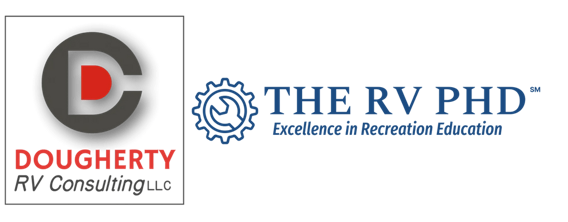Over the years, one of the biggest problems I have seen with RVs is water damage from body leaks. Bad things happen when roofs, walls, and floors are subjected to water. Damage ranges from mold and mildew intrusion to structural damage. The damage can be extensive, even leading to the RV being a total loss.
What causes the majority of water damage?
Folks who are not involved in the lifestyle often think the plumbing system is the cause of most damage, and that would not be correct, although an untended plumbing leak can do plenty of damage. The majority of leaks come from leaking seals on the outside of the RV.
The RV PHD Newsletter is a reader-supported publication. To receive new posts and support my work, consider becoming a free or paid subscriber.

The sealants used on the sides and roofs of RVs are subjected to a high amount of stress. An RV faces an earthquake and a hurricane every time it goes down the road. Over a year, an RV may see temperatures ranging from -50 to 120 degrees Fahrenheit, the beating of the sun’s rays, rain, snow, sleet, and hail. It gets hit by tree branches and objects thrown up from the road. Vehicles haven’t done well in this environment over the years, but adding a house ups the game.
Roof membrane sealants, especially, are designed to stay somewhat soft. While this article isn’t about roofs, it is a balancing game between the sealant staying soft enough to remain pliable without too much solvent that can damage the membrane. These sealants must be examined and renewed as frequently as every 90 days per some manufacturers, and many RV owners don’t do it.
What structurally happens to laminated walls that leak?
RVs come in two basic types of construction: Wood framed with hung aluminum or fiberglass siding or aluminum framed laminated walls. While the former, called stick and tin construction, can often be disassembled and rebuilt, laminated walls are a far more difficult surface to repair.

The reason is because of the design of a laminated wall. Think about other laminations you have seen. A sheet of plywood is a lamination; layers of shaved wood are glued together, and the finished piece is more robust than a board of wood would have originally been. A laminated countertop is a sheet of plywood with a plastic laminate glued atop it. An RV wall is a similar process.
With a laminated RV wall, floor, or roof, aluminum framing is usually welded together to form the shape of the RV. Foam insulation is cut to fill the spaces in between, and wiring is run as needed. Then, a Lauan paneling is laid face down on a giant roller table, and a machine sprays it with adhesive. The aluminum frame is applied to it, followed by more Lauan and the outside fiberglass. The entire unit is pressed together, and a laminated wall is made. The environment in the plant is carefully controlled for temperature and humidity, and the pressure on the wall is precise.

The system works very well as long as it stays dry. But if water enters the Lauan paneling, the wood softens and delaminates, causing giant bubbles in the fiberglass.

The problem is this: a lamination is only as strong as its parts and the glue. As long as the system remains intact, its design strength is maintained. However, structural integrity is lost if the wall, floor, or roof delaminates. While most think aluminum provides the wall’s strength, it is only part of the equation. The Lauan, fiberglass, and glue do much, if not most, work.
Why is Azdel a fix?
Azdel is a synthetic panel. (THINK: Plastic) In an RV lamination, Lauan is replaced by the Azdel. While this does nothing to prevent leaks, it does prevent delamination.

There are some caveats to a synthetic substrate, and I had an opportunity to discuss Azdel with Sam Lengerich, a product manager for Keystone RV, some years ago. According to Lengerich, while Azdel does eliminate delamination, it does not have the lateral strength of Lauan across the grain. As a result, more aluminum framing must be designed into the wall to make up for that, which adds considerable weight and cost on a sizable fifth-wheel RV.

The other caveat is that some manufacturers only use some Azdel, usually under the fiberglass on sidewalls. The result is a compromise: the fiberglass will not delaminate, but interior panels can still rot. They are easier to replace and still add to the strength of the lamination.
Should I avoid RVs without Azdel?
No. RVs have been built with Lauan for decades, and it works. It is still important to carefully maintain sealants regardless of substrate. If the RV you love doesn’t have Azdel, consider a one-piece brush on or spray on roof like Flex Armor, Crazy Seal, or RV Armor, among others. These “lifetime” roof products will reduce or eliminate maintenance on the roof; however, they come at the cost of weight and expense. Also, these only work on the roof, so you must maintain the side seals regardless.
To be clear, I would like all RV manufacturers to eliminate all Lauan in their RV structures and make RVs less susceptible to water damage. Perhaps one day, that will happen. However, the cause of delamination in most cases is the need for regular maintenance. If you keep water out of the laminate panels, they will work just fine for many years.
Resources:
https://azdelonboard.com/diy-care-repair/
https://cranecomposites.com/cci-rv/rv-care
The RV PHD Newsletter is a reader-supported publication. To receive new posts and support my work, consider becoming a free or paid subscriber.
